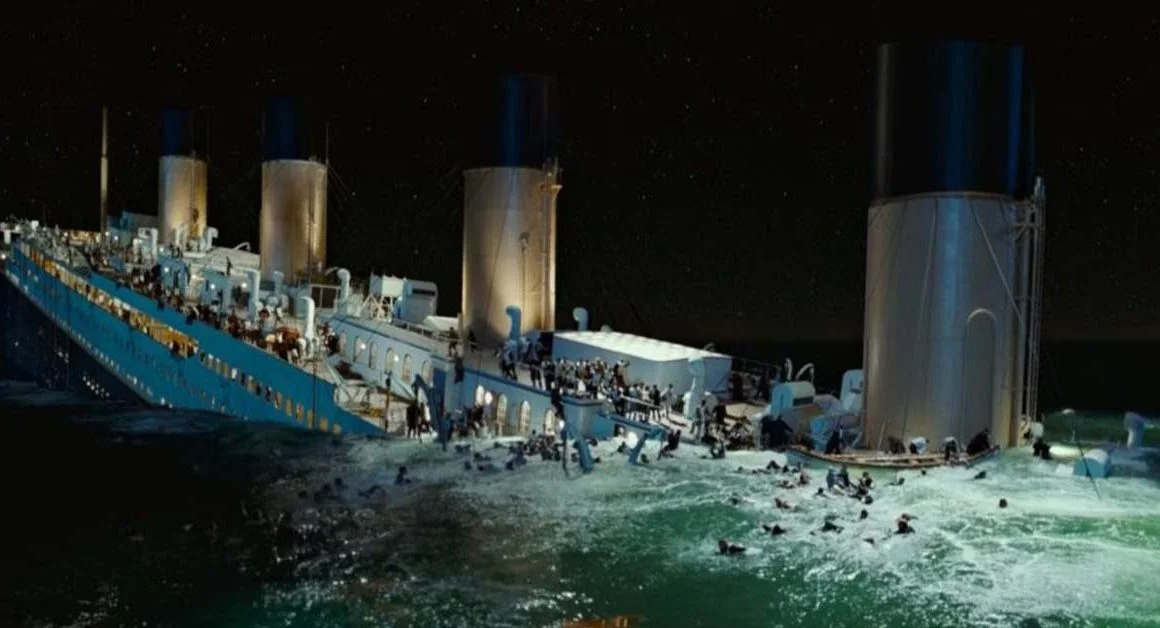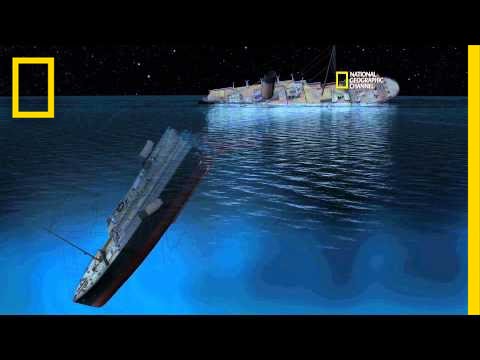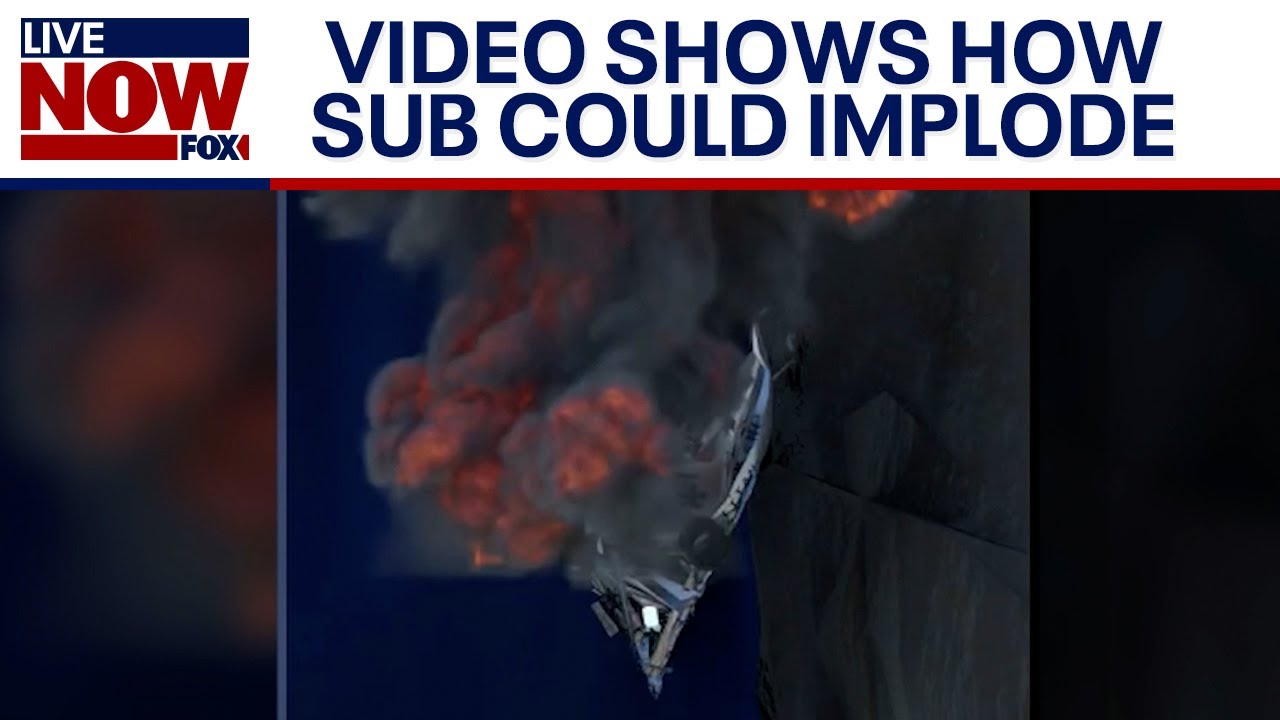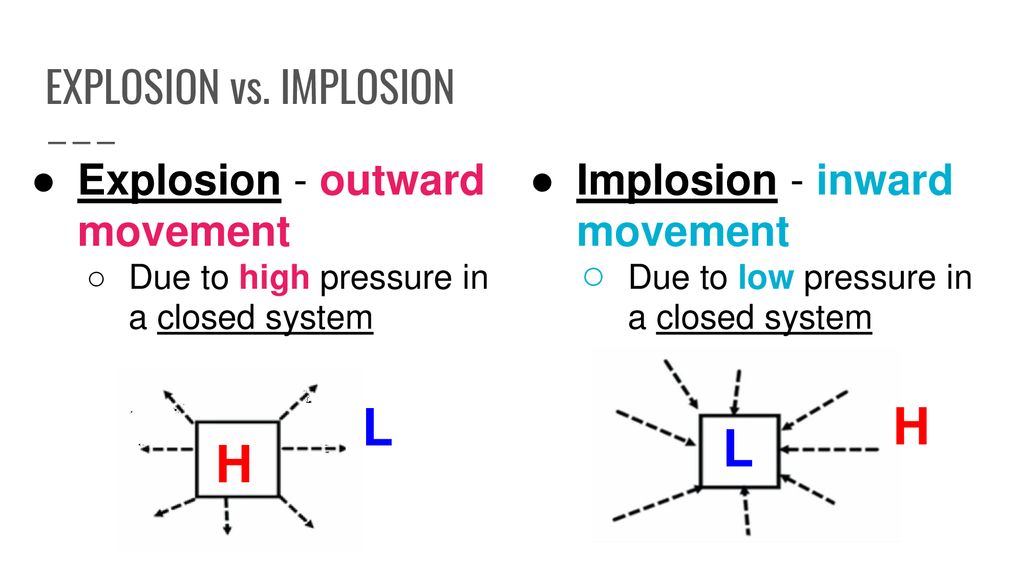Why Didn't The Titanic Implode As It Sank? Leaves People Confused
The recent tragic incident involving the OceanGate submersible, which encountered a catastrophic implosion during a dive to the Titanic wreck, has sparked curiosity about the stark contrast between the fate of submersibles and large ships like the Titanic. So, why didn't the Titanic implode as it sank?
Author:Dr. Felix ChaosphereReviewer:Xander OddityJun 28, 20235.3K Shares254.1K Views

The recent tragic incident involving the OceanGate submersible, which encountered a catastrophic implosion during a dive to the Titanic wreck, has sparked curiosity about the stark contrast between the fate of submersibles and large ships like the Titanic. So, why didn't the Titanic implode as it sank?
The implosion of the Titan submersible resulted in the instantaneous death of all five individuals on board, with their bodies likely disintegrating within a millisecond. This phenomenon has left experts puzzled.
Why Didn't The Titanic Implode As It Sank?
Have you ever wondered why ships like the Titanic don't implode when they sink, while the Titan submersible met that unfortunate fate?
Tragically, this is not the first instance of fatalities due to submarine implosions. In 2017, the Argentine submarine San Juan experienced a similar implosion, leading to the loss of all 44 crew members on board.
These incidents have prompted many to question the underlying mechanisms that cause catastrophic implosions and why they occur in submersibles like the Titan but not in massive ships like the Titanic. The answer lies in the pressure differentials.
Sean Davis sheds light on the matter stating that the lack of pressure differential means there's not going to be an implosion.
Physics professor Arun Bansil explains that when a submersible reaches great depths in the ocean, the water pressure exerted on its surface becomes increasingly intense. Once this pressure exceeds the structural integrity of the hull, a violent implosion can occur, resulting in the destruction of the submersible and the loss of all occupants.
The key factor is the pressure differential between the inside and outside of the vessel. If the internal pressure is lower than the external pressure and the structure fails to withstand it, an implosion becomes inevitable. However, in the case of the Titanic, this type of implosion was not pervasive.
According to experts, certain sections of the Titanic did experience implosions during its sinking, particularly the stern (the rear) section when it descended approximately 60 meters (200 feet) below the water's surface. However, other parts of the ship remained relatively intact as they sank to the ocean floor. The crucial distinction lies in the ability of air to escape from these sections.

New CGI of How Titanic Sank | Titanic 100
As IFLScience explains, the sections of the Titanic's hull that retained their structural integrity allowed air to be released as they filled with water. Consequently, the pressure inside and outside these portions remained balanced, preventing implosions. Conversely, areas where air couldn't escape properly experienced different pressure conditions and, consequently, imploded.
“„When a submersible is deep in the ocean it experiences the force on its surface due to water pressure. When this force becomes larger than the force hull can withstand, the vessel implodes violently.- Physics Professor Arun Bansil
Hence, while the bow (the front) of the Titanic is still recognizable on the ocean floor, the stern suffered severe damage due to an implosion caused by the inability of air to escape.
The contrasting fate of the Titanic and submersibles like the Titan can be attributed to the pressure differentials they experience during the sinking. The Titanic's ability to release air from various sections of its hull allowed for a more gradual descent, mitigating the risk of catastrophic implosions.
On the other hand, submersibles are built to withstand immense water pressure at great depths. However, if the structural integrity of a submersible is compromised, the pressure differentials can lead to a catastrophic implosion, as tragically witnessed with the Titan.
While the mysteries of the ocean continue to captivate us, these incidents serve as poignant reminders of the immense forces at play beneath the waves. The scientific exploration of such phenomena is crucial not only for understanding the intricacies of underwater dynamics but also for enhancing the safety and resilience of future deep-sea expeditions.
What Is Implosion?
Everyone knows what an explosion is, but have you ever wondered about its opposite, an implosion?
While explosions release a large amount of energy into a confined space, implosions involve the collapse of matter and energy inward due to external pressure acting on an object.

OceanGate implosion explained #titanic
Implosions Explained
- An implosion is the opposite of an explosion, where matter and energy collapse inward.
- All implosions are caused by some form of external pressure acting on an object, which is greater than the pressure within the object.
- When the external pressure exceeds the object's internal pressure without adequate support, the object collapses.
Implosions In Tanks And Vessels
Tanks and vessels designed to carry fluids are constructed to withstand the outward pressure exerted by the fluid within. Their cylindrical or ellipsoidal shapes allow for even distribution of hydrostatic forces, enabling them to resist high internal pressures. However, tanks can collapse if emptied without proper venting or filled with steam that rapidly cools.
Causes Of Tank Implosions
1. Improper Venting
- Tanks and vessels require serviceable vents to allow air admittance and prevent vacuum formation.
- If the rate of air admittance is lower than the rate of product discharge, a vacuum can be created, causing collapse.
- Inadequate venting during pumping operations is a common cause of tank collapses.
2. Steam Condensation
- Sealed tanks filled with steam can create a vacuum when the steam condenses back into liquid water.
- Condensation reduces the internal pressure, leading to an unbalanced situation and potential collapse.
Risks And Scenarios
1. Slurry Tankers
- Slurry tankers used in farming can be susceptible to implosions during filling or emptying operations.
- A vacuum system is employed to create a vacuum inside the tanker for suctioning the slurry.
- Malfunctioning release valves or inadequate venting can lead to excessive vacuum and potential collapse.
2. Corrosion and Wall Thickness
- Corrosion on tank walls, especially in slurry tankers, can reduce wall thickness and compromise structural integrity.
- Thin walls or defects in the tank structure can concentrate stresses, leading to a rapid escalation of collapse.
Precautions To Prevent Implosions
To prevent implosions in tanks and vessels, it is crucial to implement the following precautions:
Proper Venting
Proper venting is essential to maintain the balance of air admittance and product discharge rates. This helps prevent the formation of a vacuum inside the tank or vessel, reducing the risk of implosion. The following steps should be taken:
- Install serviceable vents in tanks and vessels to allow for the appropriate rate of air admittance.
- Regularly inspect and maintain venting systems to ensure their proper functioning and prevent any blockages or malfunctions that could lead to vacuum formation.
Regular Maintenance
Regular maintenance plays a vital role in identifying and addressing potential issues that may contribute to tank implosions. The following measures should be taken:
- Perform routine cleaning and examination of internal surfaces to detect any signs of corrosion, damage, or weakening of the tank structure.
- Repair and reinforce tank walls as necessary to maintain their structural integrity. This may involve addressing thinning areas, repairing defects, or reinforcing weakened sections.
Inspection of Tank Walls
Regular inspection of tank walls is crucial to ensure their thickness and structural integrity. The following practices should be implemented:
- Utilize non-destructive ultrasonic wall thickness testers to assess the condition and thickness of tank walls. This allows for accurate measurement without damaging the tank structure.
- Identify areas of corrosion or thinning and take immediate corrective measures to prevent further degradation and potential collapse.
- Employ appropriate repair and reinforcement techniques to strengthen weakened sections of the tank walls, ensuring their ability to withstand pressure differentials.
Timely Repairs
Prompt repairs are vital to address any defects, dents, or thinning that may compromise the structural strength of the tank. The following actions should be taken:
- Regularly inspect the tank for any signs of damage, such as dents or defects, and address them promptly to prevent further deterioration.
- Repair any thinning areas of the tank walls to restore their structural integrity.
- Reinforce weakened sections to ensure they can withstand the external pressure acting on the tank.
By implementing these precautions and adhering to regular maintenance practices, the risk of implosions in tanks and vessels can be significantly reduced. These measures help to maintain the structural integrity of the tanks, prevent the formation of vacuum conditions, and ensure the safety and reliability of the system.
Importance Of Safety Measures
Implosions in tanks and vessels pose significant risks to personnel, equipment, and the surrounding environment.
To prevent catastrophic incidents:
- regular maintenance
- proper venting
- timely repairs
Following safety guidelines and industry standards ensures the integrity and safety of tank systems.
Understanding the causes, risks, and precautions related to implosions is crucial in industries where tanks and vessels are utilized. By implementing proper venting, regular maintenance, and timely repairs, the risk of implosions can be significantly reduced, ensuring the safety and reliability of tank systems.
Submersible Implosions Insights From A Physics Expert Professor Arun Bansil
Northeastern GlobalNewsinterviewed Arun Bansil, a renowned University Distinguished Professor of Physics at Northeastern University, to gain valuable insights into the perplexing phenomenon of submersible implosions and their profound consequences.
Here's a summary of the enlightening conversation:
Understanding Submersible Implosions
Arun Bansilexplains that when a submarine or submersible "implodes," it refers to a violent collapse of the vessel. Unlike explosions, which release energy outward, implosions involve forces acting inwards. When a submersible reaches great depths in the ocean, it experiences immense water pressure on its surface. If this external force surpasses the structural strength of the vessel's hull, a catastrophic implosion occurs.
Implications For Occupants
Describing implosions as highly violent events, Bansil highlights that as the hull of the submersible breaks apart under enormous external pressure, a significant amount of energy is released. Consequently, the occupants within the submersible would have met an instantaneous demise. Bansil emphasizes that they would not have suffered or been aware of the impending danger.
Engineering Challenges And Submersible Design
Bansil sheds light on the engineering intricacies associated with navigating extreme ocean depths and offers insights into potential factors contributing to the presumed implosion of the Titan.
Traditional submarine hulls are typically constructed using materials such as steel, titanium, or aluminum, which possess well-established performance characteristics under extreme conditions. These materials effectively withstand external pressure and safeguard the vessel.
However, Bansil explains that the experimental design of the Titan set it apart. The use of carbon fibers in its hull was aimed at achieving a lighter structure and providing more space for passengers.
While carbon fibers offer advantages in weight reduction, their behavior in deep-sea applications is not as extensively understood. They can unexpectedly crack or break, compromising the structural integrity of the hull.
Furthermore, Bansil highlights that the repetitive deep-sea dives undertaken by the Titan would have contributed to hull fatigue, rendering it more susceptible to catastrophic failure.

OceanGate sub: Video shows how implosion likely happened | LiveNOW from FOX
The Fascination With Deep-Sea Exploration
While acknowledging the allure of venturing into submersibles and exploring the depths of the ocean, Bansil underscores the inherent risks involved in such endeavors. Deep-sea exploration represents an extraordinary pursuit driven by scientific curiosity and the quest to unravel the mysteries hidden beneath the surface.
However, the incident involving the Titan serves as a poignant reminder of the importance of making informed engineering choices and prioritizing safety considerations to mitigate potential risks and prevent catastrophic implosions.
People Also Ask
What If The Titanic Hit The Iceberg Head On?
Contrary to popular belief, experts suggest that the ship might have survived if it had hit the iceberg head-on. Instead of ripping open, the force would have caused the ship to crumple around the impact area, potentially breaching only 2-3 compartments. Considering the Titanic's design to withstand damage to 4 compartments, it raises intriguing possibilities about the alternate fate of the ill-fated vessel.
Did The Titanic Make Any Stops Before Sinking?
Before its tragic sinking, the Titanic made two stops on its fateful voyage. The first stop was at Cherbourg, France, followed by a second stop at Queenstown (Cobh), Ireland. The ill-fated ship's wreckage now rests in the Atlantic Ocean, located approximately halfway between Queenstown and New York City. The Titanic's brief stops mark significant points in its historical journey.
Why Didn't Titanic Just Stop?
The Titanic, being a massive ship, lacked the time required to come to a halt. Spotting the iceberg too late, the crew had a mere 37 seconds to react before the collision. The vessel's size and limited time frame made it impossible to stop or change course, leading to the tragic outcome.
Conclusion
In conclusion, the phenomenon of submersible implosions continues to intrigue and fascinate us in the world of deep-sea exploration. With the valuable insights provided by Arun Bansil, a distinguished professor of physics, we have gained a better understanding of the violent collapses that can occur under immense external pressure.
While we have explored the reasons behind the catastrophic implosion of the Titan submersible, the question of why didn't the titanic implode as it sank still remains. By delving into the delicate balance between external pressure and structural integrity, we continue to unravel the complex dynamics that shape the fate of submersibles.
This ongoing inquiry underscores the importance of physics-based engineering and safety considerations in deep-sea ventures.

Dr. Felix Chaosphere
Author
Dr. Felix Chaosphere, a renowned and eccentric psychiatrist, is a master of unraveling the complexities of the human mind. With his wild and untamed hair, he embodies the essence of a brilliant but unconventional thinker. As a sexologist, he fearlessly delves into the depths of human desire and intimacy, unearthing hidden truths and challenging societal norms.
Beyond his professional expertise, Dr. Chaosphere is also a celebrated author, renowned for his provocative and thought-provoking literary works. His written words mirror the enigmatic nature of his persona, inviting readers to explore the labyrinthine corridors of the human psyche.
With his indomitable spirit and insatiable curiosity, Dr. Chaosphere continues to push boundaries, challenging society's preconceived notions and inspiring others to embrace their own inner tumult.

Xander Oddity
Reviewer
Xander Oddity, an eccentric and intrepid news reporter, is a master of unearthing the strange and bizarre. With an insatiable curiosity for the unconventional, Xander ventures into the depths of the unknown, fearlessly pursuing stories that defy conventional explanation. Armed with a vast reservoir of knowledge and experience in the realm of conspiracies, Xander is a seasoned investigator of the extraordinary.
Throughout his illustrious career, Xander has built a reputation for delving into the shadows of secrecy and unraveling the enigmatic. With an unyielding determination and an unwavering belief in the power of the bizarre, Xander strives to shed light on the unexplained and challenge the boundaries of conventional wisdom. In his pursuit of the truth, Xander continues to inspire others to question the world around them and embrace the unexpected.
Latest Articles
Popular Articles


